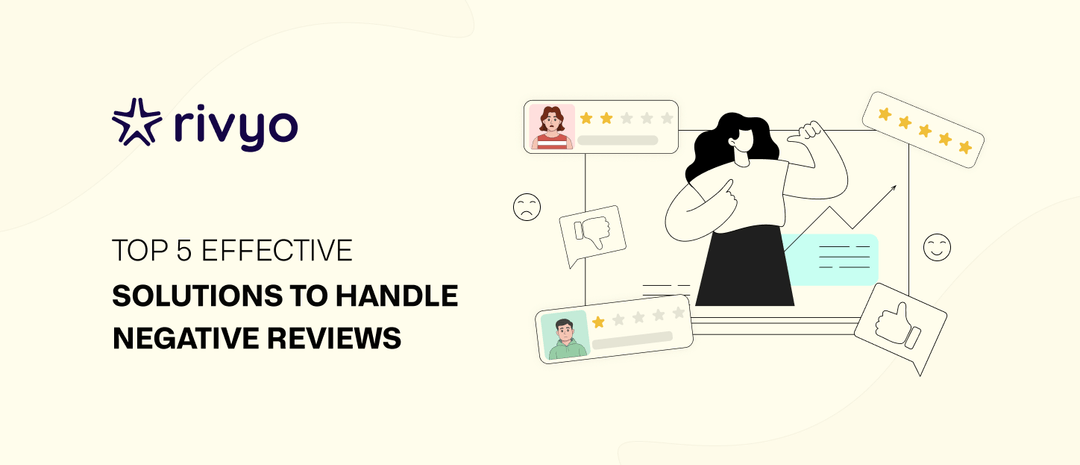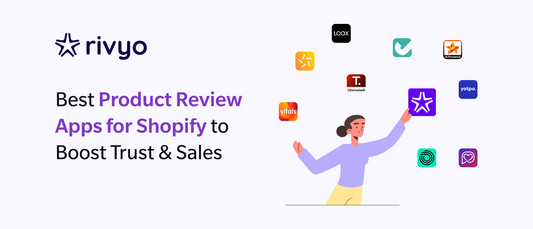5 Effective Solutions to Handle Negative Reviews the Right Way

Today's online reviews on websites hold immense power. A few words from a disappointed customer can affect purchasing decisions and guide how potential customers view your company. Positive reviews help build credibility, however negative reviews can feel like an insult, especially if you've worked hard to provide an excellent product or service.
However, negative feedback is not always a bad thing. In fact, when handled well, it may be an opportunity to showcase your customer service abilities, improve your brand's reputation, and even convert unhappy consumers into loyal heroes.
Here are five effective solutions to handle negative reviews the right way without losing your credibility.
1. Don’t Take It Personally- Respond Professionally
Let's start with the golden rule: never respond to a negative review in anger. It's understandable to feel defensive after all, you've invested time and effort in your product or service. However, your response should never show frustration. Instead, speak in a calm, empathic, and professional tone.
A thoughtful reply could look like this:
Thank you for your feedback , [Customer's Name]. We’re sorry to hear about your experience and we’d love the opportunity to make it right. Please contact us through [contact email] so that we can investigate the situation further."
A professional response shows other potential customers that you care. It also signals that you’re a business owner who values customer service. Even if the review is hyperbolic or unfair, how you respond can influence how others notice your brand far more than the review itself.
2. Respect and Apologize Sincerely
One of the most common mistakes businesses make is brushing off criticism or blaming their customer. No one wants to feel ignored, especially after spending their hard-earned money. A sincere apology is not seen as accepting fault if you did nothing wrong; rather, it validates their experience.
Use empathetic language:
- “We understand how frustrating this must have been for you.”
- “I’m sorry we missed the mark this time.”
- “We truly value your feedback and want to do better.”
When you recognise a customer's issues with honesty, you get started to rebuild their trust as soon as possible. Remember, many unhappy consumers simply want to be heard.
3. Offer a Resolution and Follow Through
Words are effective, but our actions win the deal. After accepting the problem, provide a clear solution wherever possible. This could be a refund, a replacement, a discount on their next order, or personalised help to resolve the issue.
What matters is that you:
- Provide options that feel fair to the customer.
- Act quickly delayed responses often increase the situation.
- Follow up to ensure the issue has been resolved.
When a complaint has been handled well, many customers are ready to update their review or even become repeat buyers. A superb recovery can result in higher loyalty than a perfect transaction.
Here’s a pro tip: If you're on Shopify or another eCommerce platform, using a review management tool like Rivyo Product Review App can help streamline your review responses, track feedback, and respond in real time.
4. Learn From Patterns and Feedback
A single one-star review isn’t the end of the world. But if you notice patterns of late deliveries, quality concerns, or confusing product descriptions, it's time to look into them more.
Turn negative reviews into a free focus group. Ask yourself:
- Are certain complaints showing up repeatedly?
- Is there a disconnect between your product page and the actual experience?
- Are your support systems failing to handle complaints in sufficient time?
Use the insights to improve your processes, train your team, and enhance your product descriptions or packaging. You can even reach out to customers after implementing changes and let them know their feedback made a difference. That type of responsiveness can turn critics into brand advocates.
If you want to go a step further, consider tools like Trustpilot’s guide to help you build a more feedback-driven approach.
5. Encourage More Positive Reviews
Sometimes, one negative review stands out simply because there aren’t enough positive ones to balance the scale. A good way to mitigate a few bad reviews is to actively encourage happy customers to leave feedback.
Here’s how to do it effectively:
- Send a follow-up email after purchase, requesting a review.
- Offer incentives (like loyalty points or a discount) in exchange for honest reviews, not only 5-star ones.
- Make it easy to include a direct review link in your emails, thank-you pages, and packaging.
By increasing your volume of positive reviews, you’re building a safety net. Future customers are more likely to trust a brand with hundreds of mostly positive reviews than one with just a few (even if one or two are critical).
Final Thoughts
Negative reviews don’t have to be stressful. When handled correctly, they can prove your brand's credibility, create paths for future improvements, and even generate positive word-of-mouth. Remember:
- Respond professionally, not defensively.
- Accept the problem and sincerely apologise.
- Provide a clear resolution and follow through.
- Learn from recurring feedback to prevent future issues.
- Actively collect positive reviews to build a balanced online presence.
In the end, accept feedback, both positive and negative, and utilise it to develop a better, stronger version of your brand.
FAQs:
Q1: Why is it important to respond to negative reviews?
Ans: Responding to negative reviews shows that you care about your customers' experiences and are committed to resolving issues. It helps rebuild trust, improves brand value, and may even turn unhappy customers into loyal buyers.
Q2: Should I delete negative reviews from my site?
Ans: It's generally not recommended to delete genuine negative reviews. Instead, address them professionally. Removing negative feedback can appear dishonest and may damage your credibility.
Q3: Can negative reviews actually help my business?
Ans: Yes! Negative reviews provide valuable insights for improvement and can increase trust when handled well. A mix of positive and negative feedback shows authenticity and helps consumers make informed decisions.

Rivyo Reviews & Loyalty

Try Rivyo or Book a Demo
Boost trust and sales by showcasing authentic product reviews on your Shopify store with Rivyo.















